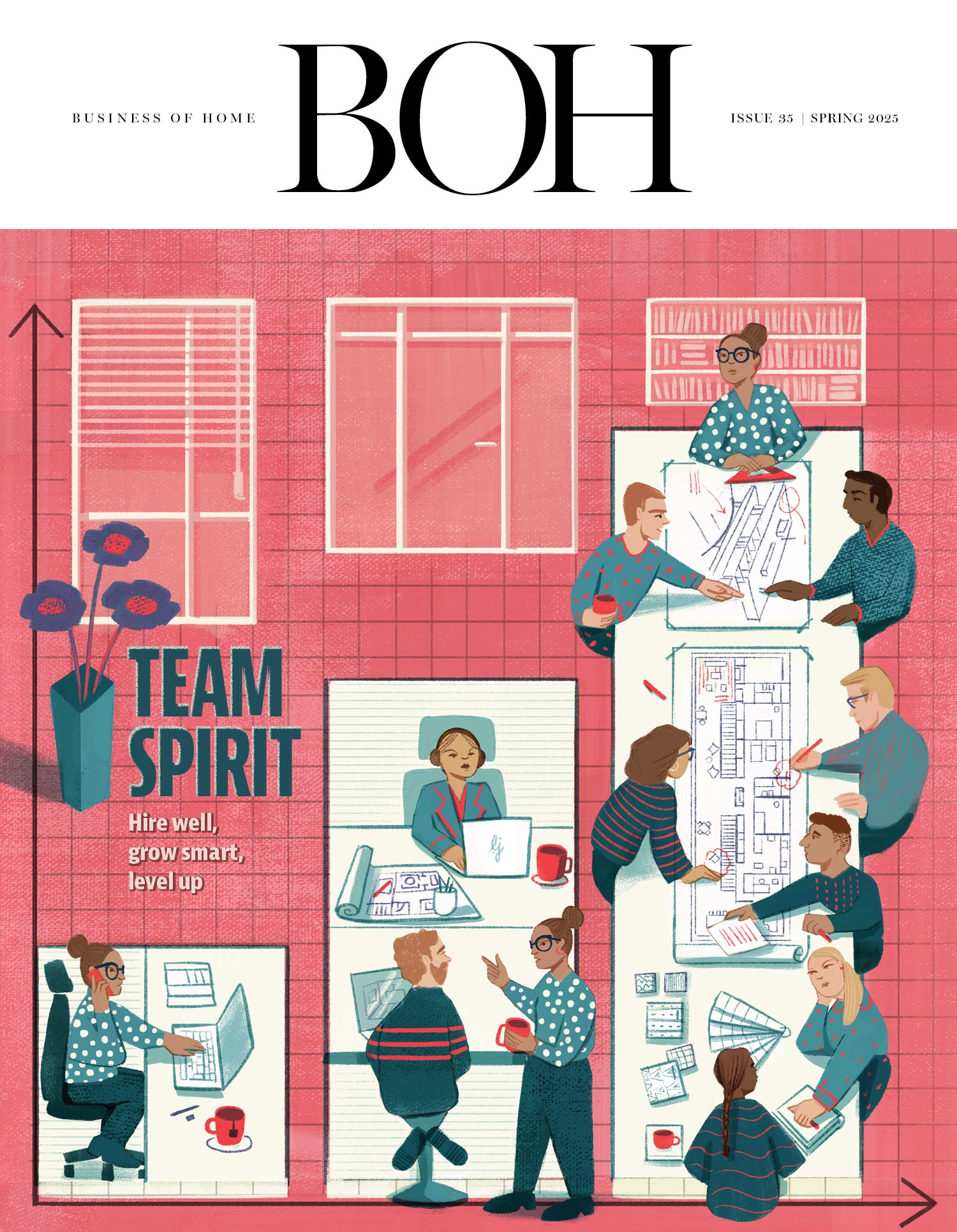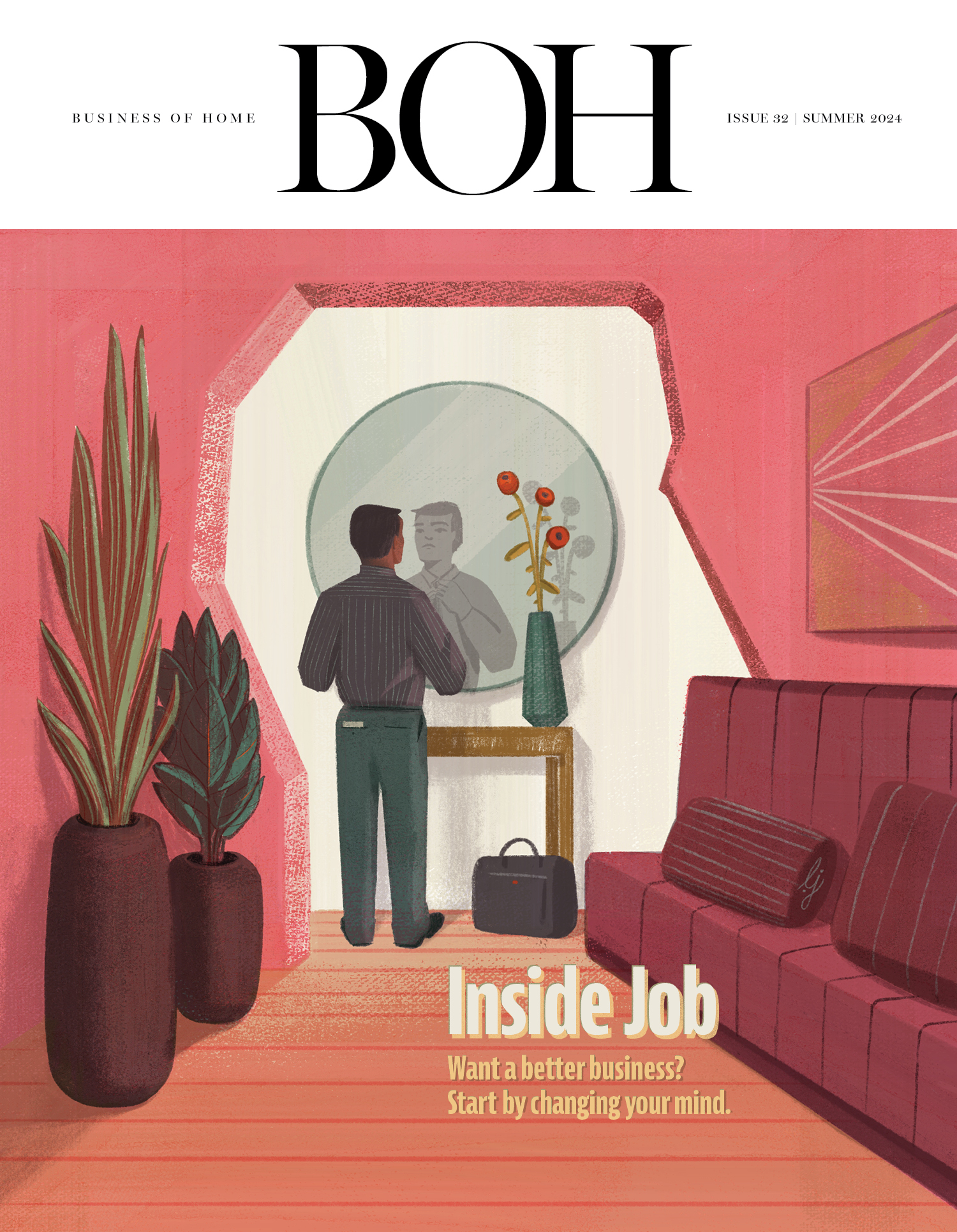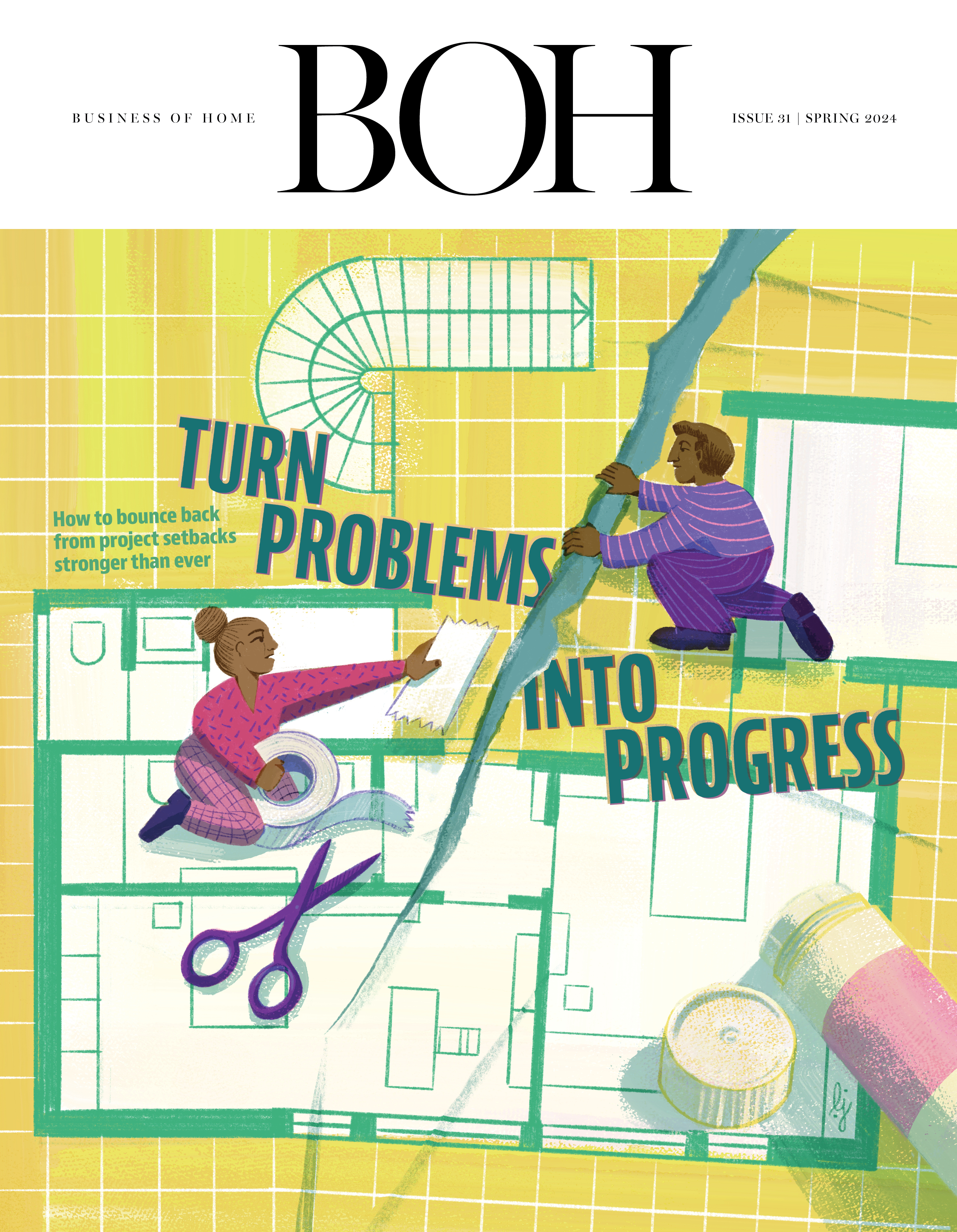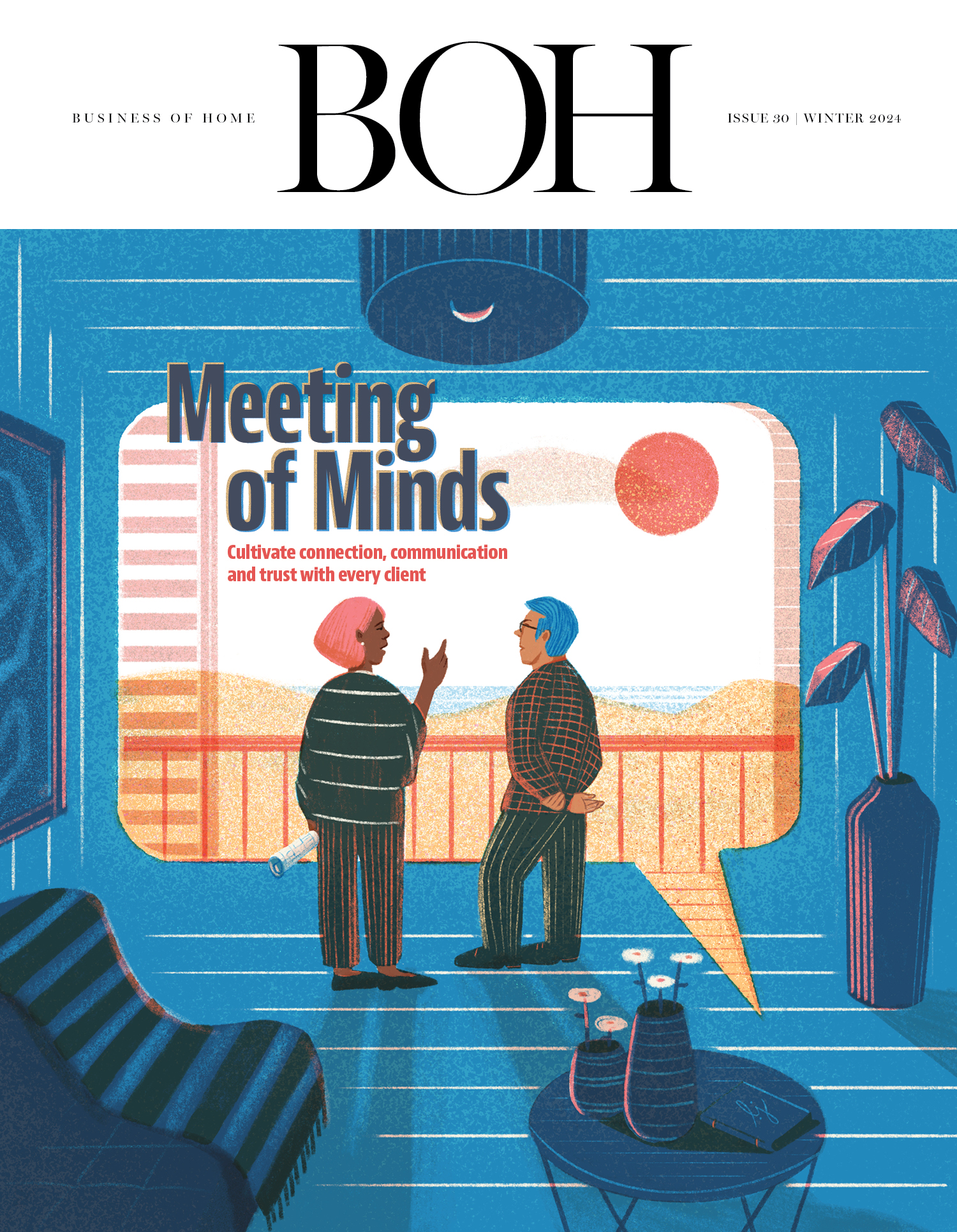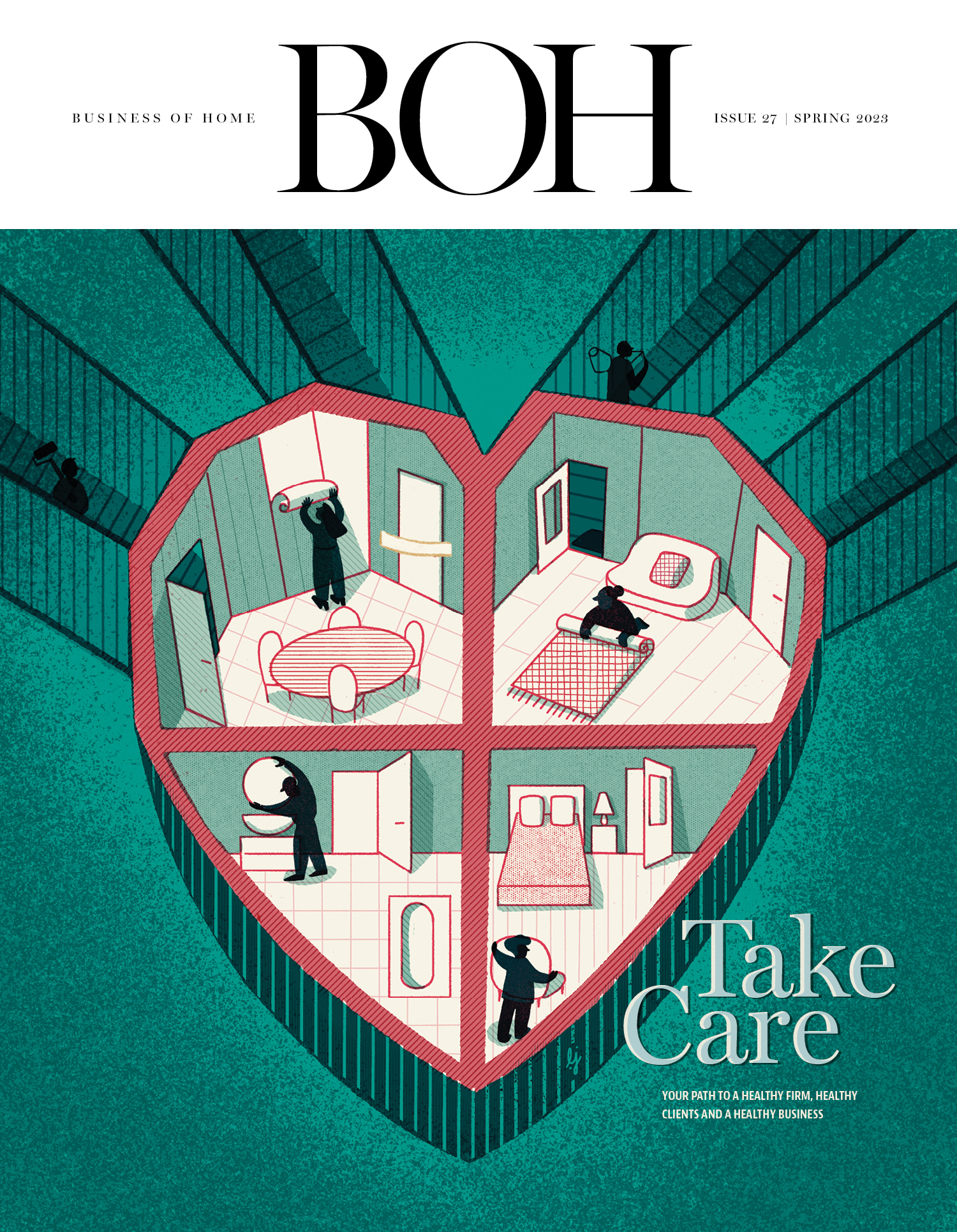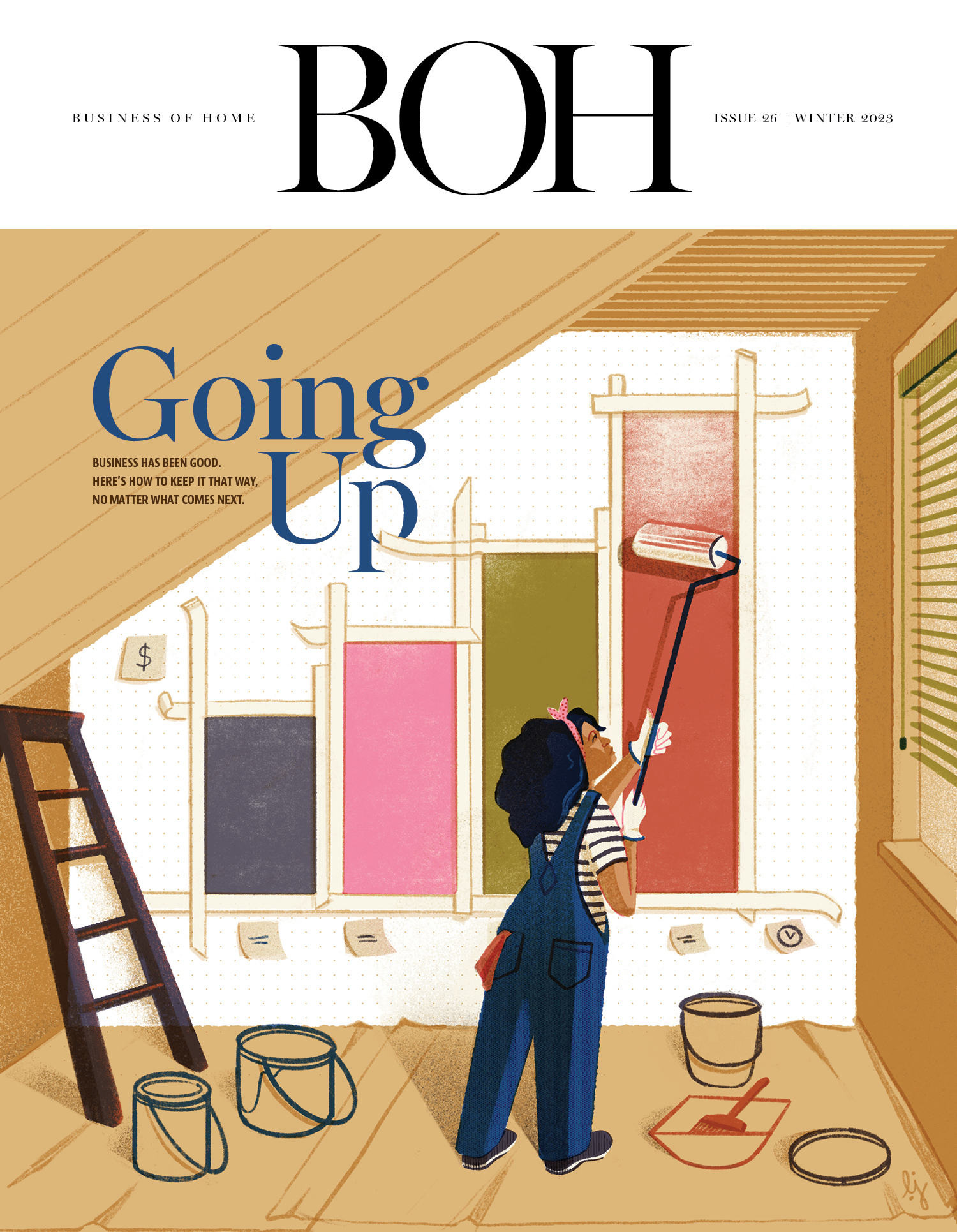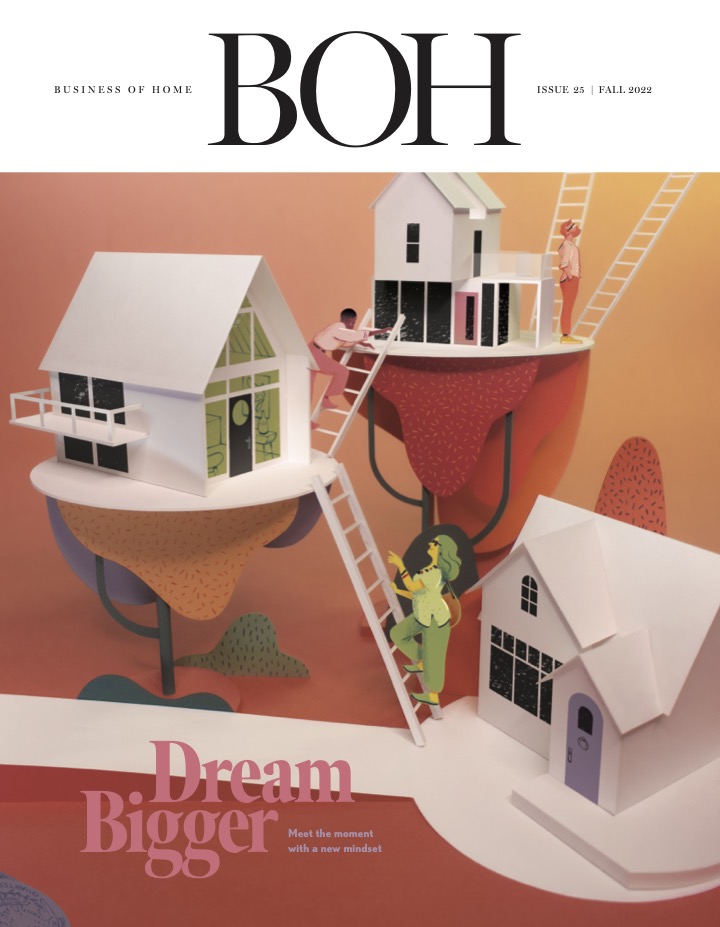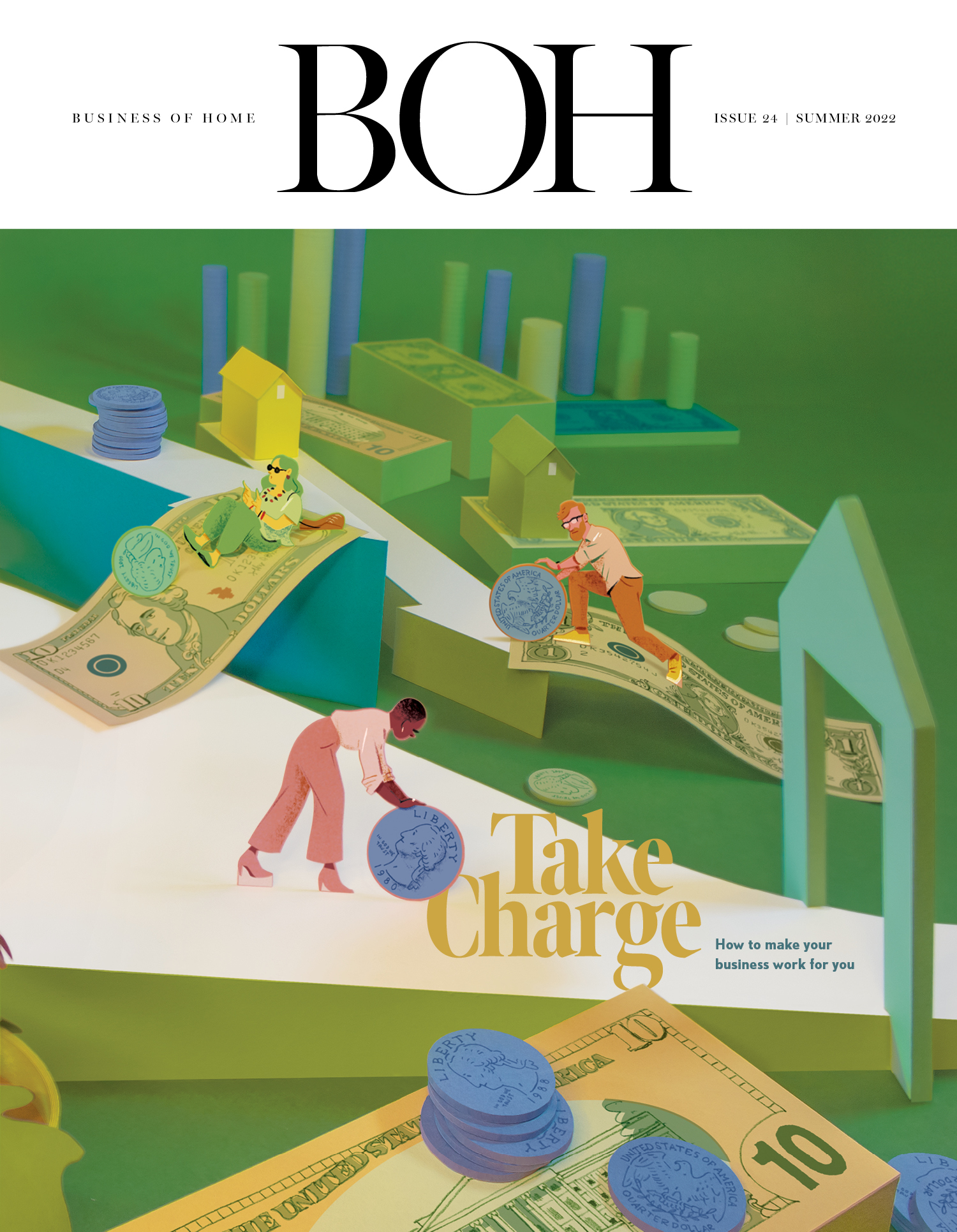In Business of Home’s series Shop Talk, we chat with owners of home furnishings stores across the country to hear about their hard-won lessons and challenges, big and small. This week, we spoke with Meg Van Lith, who owns Tierra Del Lagarto in Scottsdale, Arizona, with her mother, Linda Van Lith.

Tierra Del Lagarto opened in 1991, when Meg’s parents—burnt out from corporate financial jobs and “chasing that ’80s money,” as she puts it—decided to move back to Scottsdale, where Meg and their entrepreneurial venture were born. Looking for an ailing business to buy and fix up, the couple found a furniture store in a beautiful building in the city’s Old Town neighborhood and taught themselves how to source. Meg, who was in high school at the time, was on unboxing duty; she also attended markets and shows with her mother, where they were often intrigued by ornate furniture pieces imported from Asia.
In 1995, when Meg was a “not terribly motivated” college student working at the store over the summer, a series of mishaps with Linda’s first planned sourcing trip to Indonesia and Thailand led to Meg joining in for a mother-daughter excursion. “We ended up hiring a driver through a connection with our shipping company, and we just drove slowly up and down the roads. We didn’t know what we were doing,” she says. “But thus our first container was born.”
Primarily an import store, Tierra Del Lagarto focuses on the wares of Indonesia, Turkey, India, Mexico and Morocco, and is known for large, architectural pieces like carved day beds and sideboards made of salvaged Indian doors, in addition to accessories and lighting. Ahead, Meg shares what it’s been like to form relationships with their myriad vendors abroad, why she ignores industry trends, and which part of the world she’d like to explore next.
Can you tell me about some of your relationships? I can’t imagine what your Rolodex must be like.
That very first person we ever hired is still on our outside staff, which is our driver [in Indonesia]. He’s one of my best friends. He keeps our warehouse and still drives us while we’re there. My husband and I invested in some land in his village—we’re in the process of building a house there, and he’s going to be our neighbor.
On June 11, design business strategist and coach Melissa Galt will teach you how to reclaim your time and turn productivity into profitability with smarter project management, strategic scheduling and elevated client experiences. Click here to learn more and remember, workshops are free for BOH Insiders.
It’s similar in India, which became the most important [source] later in the 1990s. We made connections through vendors that we already used in the States, got a lot of introductions, met a lot of amazing people, and now we work with five or six different warehouse-type companies in Rajasthan. The great thing about India is the wood is really dry—Rajasthan is a desert state—so we don’t have to worry much about woods [from there]. That’s a big issue in Arizona: the wood quality. You need to make sure it’s strong and substantial and dry.
A lot of those people we met on our first importing trips, we are still working with 30 years later. We have the same kind of connection with the guy we worked with on day one in Marrakesh. Those early people we met in India are still our closest contacts and friends; we’ve been to amazing weddings in India for their grown-up kids. It’s really powerful to know people for decades and see their kids grow up. I’ve brought my kids to meet their kids!

When you create new relationships now, is it based on what you’re looking for? Like, “Oh, I wish we had XYZ product,” and then you find those people?
It’s similar to how it was in the ’90s, oddly enough: It’s still a lot of weird connections, but now it’s broader because we have the internet. When I realized so many people were bringing beautiful, farm-type goods out of Hungary, we reached out to a company I found on the internet that does Hungarian tours for interior designers. I worked out a deal so they could show us around, and we drove around the Hungarian countryside for a week and put together a container. That was fun and outside our usual funky look. We did the same thing in Guatemala, where we went without knowing too much other than a connection with Molly Berry. We went to markets and met weavers, and now we’ve had a textile line done out there.
We have a huge collection of books on indigenous crafts and artistry around the world, and also, we have wanderlust. We always want to see more, do more. And it’s so much easier to research now with the internet. You can find people on Instagram. It’s a much smaller world, and of course there are more people doing it now too. There’s plenty of amazing stuff for everybody.
How much time do you spend traveling?
It’s a couple months of the year. We spend a lot of time in Indonesia—over a month in the summer. [In total], it’s probably close to three months, for two weeks at a time. My husband also has a real, normal job. He used to travel quite a bit before Covid, and he also goes to India. When my kids were younger, it was challenging. They’re teenagers now, so it’s easy, but they’ve definitely grown up with the idea that sometimes there’s just one parent and that’s fine. With my parents here, and my husband’s parents here until recently, we had a great network of people who would step in to help. But honestly, you can do a lot in two weeks. In four or five days in Jodhpur, we can fill six containers of stuff. It’s not like the first couple of trips, where we’d be like, ‘Oh, God, do you think this is going to work?’ Now we zero in, and we can walk miles of warehouses. My mom and I, to this day, will pick out the same thing if we’re in different aisles.
How is the store set up?
It’s definitely vignette-driven. We’re really big on visuals. When we receive our containers—we get about 15 a year—they come directly into the store. We don’t receive them at a distribution center. So it is like organized chaos. We have some areas that look like perfect little vignettes: a bedroom, a dining room. But then as you get further back into the store, it gets a little more chaotic. We have an area with literally hundreds of lanterns from Turkey and Morocco and Indonesia hanging in this giant cluster. We have stacks of coffee tables back there. We have hundreds of zellige tile tabletops from Morocco, all in rows, so people can page through them. In Arizona, one of the only things we can put outside are tile tables. We keep a 12,000-square-foot warehouse within our facility [for storage], but really we want everything to be out. We want people to see stuff.
Who is your customer base? Do you have a trade program?
We have a trade program, and interior designers are a big part of our business. We cater to them 100 percent. We also have an approval process where people can take things home for a few days to make sure that they work—either for them personally or for a client. We have our own delivery truck, our own delivery guys. We arrange shipping all around the country, and internationally too. We’re full-service for the trade and [retail consumers].
About 17 years ago, we moved into a location that’s more on a main street, literally right across from Costco. It’s quite handy—people pumping their gas at Costco can look across the street and see us. That really helped, especially during the last big recession. We opened these doors in 2007, and I think moving to this location [is what] saved us.
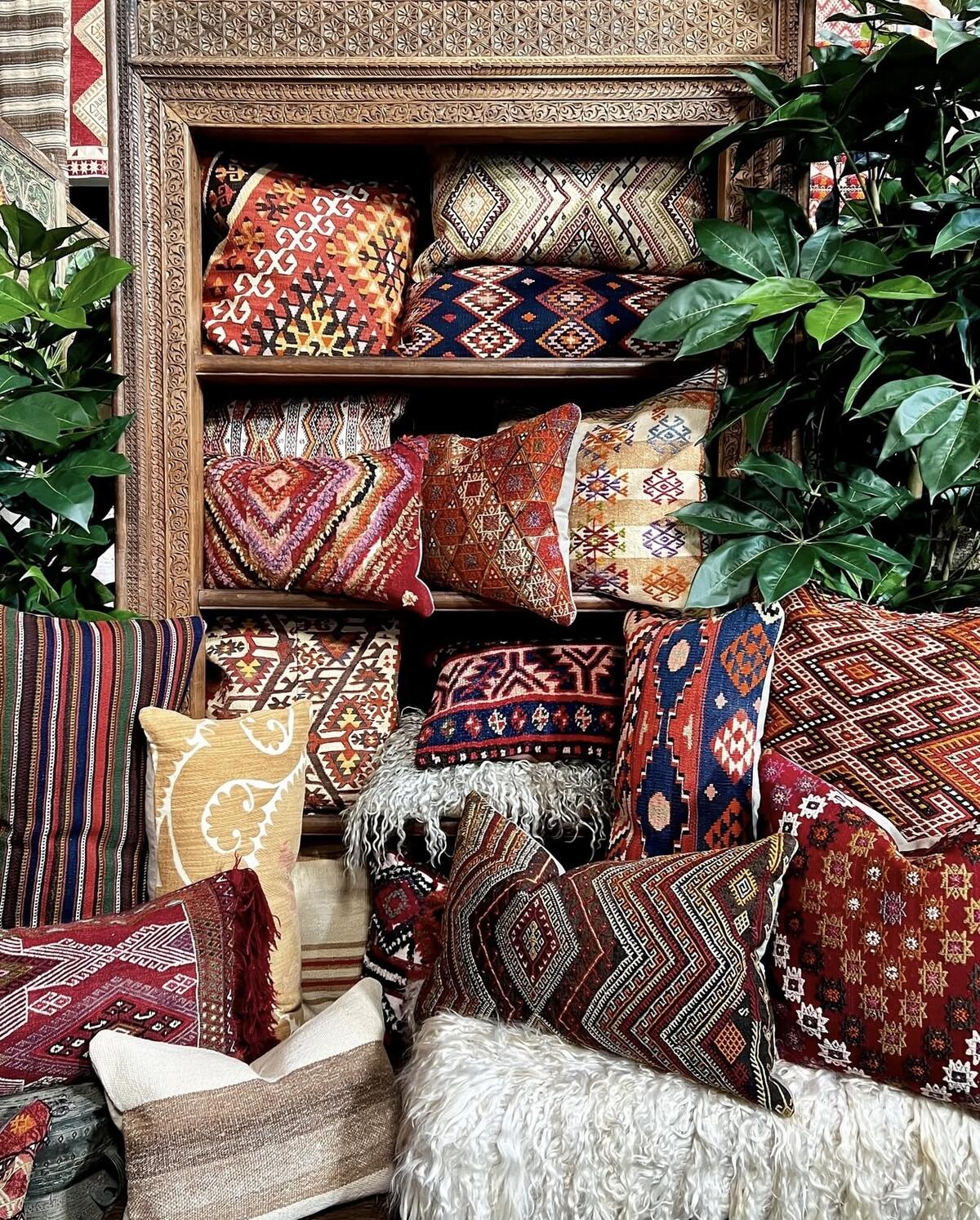
Arizona, and our area in particular, has been a place of growth. People have been moving here from all over the country. People are pretty affluent, especially in North Scottsdale. It’s second homes, third homes, retired people or snowbirds. This time of year, a lot of those people have left and gone back to their homes in less punishingly hot summer areas. But summer is a great time [for designers] to get projects done. A lot of designers do complicated projects over the summer to ready homes for clients returning in the fall.
What is your own favorite category?
I’m a total textile junkie. I live for going through stacks of old rugs in Turkey. We just received about 700 pillows that I had made from old rugs we got there last year. In India, we go through old embroideries, with all the tiny mirrors, or the block prints. We carry tons of bedding, summer quilts, napkins—we’re really known for that stuff. We have I don’t know how many thousands of pillows in stock. We have bookshelves full of handwoven blankets.
The other thing I love is architectural salvage. In India, Indonesia and Morocco, we go to huge yards that have stacks of old doors—towering, 12-foot doors from old caves or countryside palaces. There’s a great flea market in Marrakesh where we buy old riad doors, and windows with the scrolly fretwork. People can use them for courtyard gates or interior doors built to be focal points, or we carry these big, beautiful corbels people can use for mantle support or shelves. It’s fascinating, learning all the history and then getting to bring them home and teach everybody here about it.
As you’ve brought in new vendors, how do you make sure that their practices are ethical? How do you figure out who to go into business with?
There are a lot of things that we don’t buy. People come in looking for those huge, live-edge tables from Indonesia, and they’re just not ethically sourced, generally. You need to educate yourself about what is bad. We definitely lean into the idea of buying as much recycled material as possible. A lot of our furniture from India—even if it’s new, it is made of reclaimed wood. We visit the factories where they’re made, and you can see it being done, and the giant piles of wood from old floorboards and rafters. Connecting directly with the individuals who are sourcing or creating the things has been a direct line to that [process]. When we see people making the things, and it’s a positive environment, that’s the biggest thing.
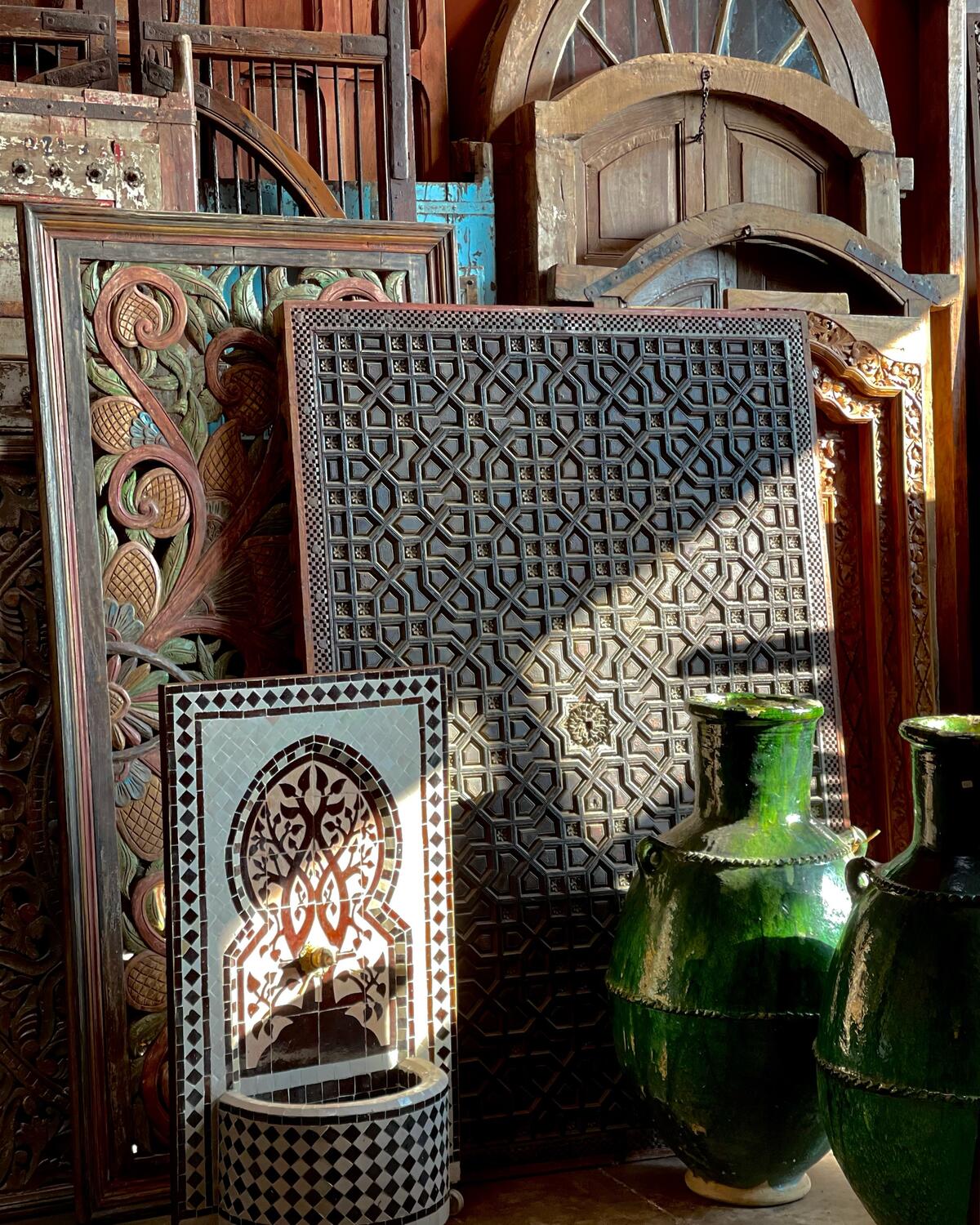
For example, I’ve been designing a new bedding line in India, and have seen videos of how they rinse the environmentally sustainable dyes through their fabric, and then recycle the water—they have a contract with a company that takes the sludgy water and uses it in concrete manufacturing. They actually pay to take their sludge. Finding people like that is a miracle. Whenever we can make a decision to work with people like that, we do. It pays to travel, and understand how hard it can be for people elsewhere. The more you know makes a difference.
How much do you pay attention to trends, and how do you adjust to them? So much of the last decade was about gray and white, which seems like the antithesis of the bohemian, well-traveled look.
As you can probably guess, we’re not very trend-driven. We have always been fighting the fight for color. But people come to Arizona from elsewhere, and they realize their traditional furniture doesn’t really fit in the desert, or in a Spanish colonial house. The resale shops here are filled with all this Queen Anne–looking stuff. People often need to start over, and I think that desert living actually allows for a more colorful palette. We get them in with the carved buffet, and then they’re like, “Look at this colorful pillow. Maybe I could try it on my white sofa.” Little by little, [they discover that] color is fun.
That said, we’ve seen it go from that classic Southwest look in the early ’90s to that big Tuscan movement for so long, to the farmhouse look, to whatever this pale thing is, and we definitely have something for everyone. Some people come in and pick out every beige pillow and gray whatever that we have. We have those things, and do them well, but I think we win people over slowly, but surely.
You’ve been working for this business for over 30 years, but you keep mentioning new projects or lines. What are your hopes for the future of the business?
Well, weathering whatever’s happening right now [with shifting U.S. tariff policies and market fallout]. But we’ve been through this before. I always want to find new places to go. Right now, it’s tough to think beyond the next six months, but I would love to see more of Eastern Europe. As we develop this house in Indonesia, I would love to spend more time in that part of the world too.
My real dream is to create a wholesale line that is a more collected version of what we’ve done so well with over the years. If I am in Indonesia, and it’s only a seven-hour flight to Delhi, it’d be so much easier to be on the ground, at a warehouse, developing pieces that can be reordered. Right now we do so much that’s one-of-a-kind, so it’s impossible to scale.
What’s your favorite day as a shop owner?
Well, there’s being in the shop and then there’s shopping, and they’re both great. A great day in the shop is when there’s a designer who’s picking out a bunch of stuff, or a customer we’ve known for decades who comes in with a friend, and we get to talk about all the things [they’ve sourced from us] over the years. Another great day is container day. The whole team of 14 of us comes in, we wear our TDL T-shirts, the guys are unloading and the girls are unwrapping and getting things out on the floor, and Linda and I are like, “Oh, yeah, remember this?” Because it’s been six months since we picked it up, and we get to show it to everybody. We stop and get everybody lunch, and then get back to it. Eventually I send an email out and tell [customers about the new inventory], and they’ll come in and talk about it all again. I love that.
The best day shopping is in India, when we go to the big yard of architectural salvage with our dear friends. It’s this gorgeous open warehouse space planted with neem trees, and there’s dappled light coming through the leaves. We look at 15-foot beams and have sideboards or bookshelves made out of them, or we pick out old doors and say, “Let’s set these into an armoire.” We spend all day just walking and dreaming up ideas.



